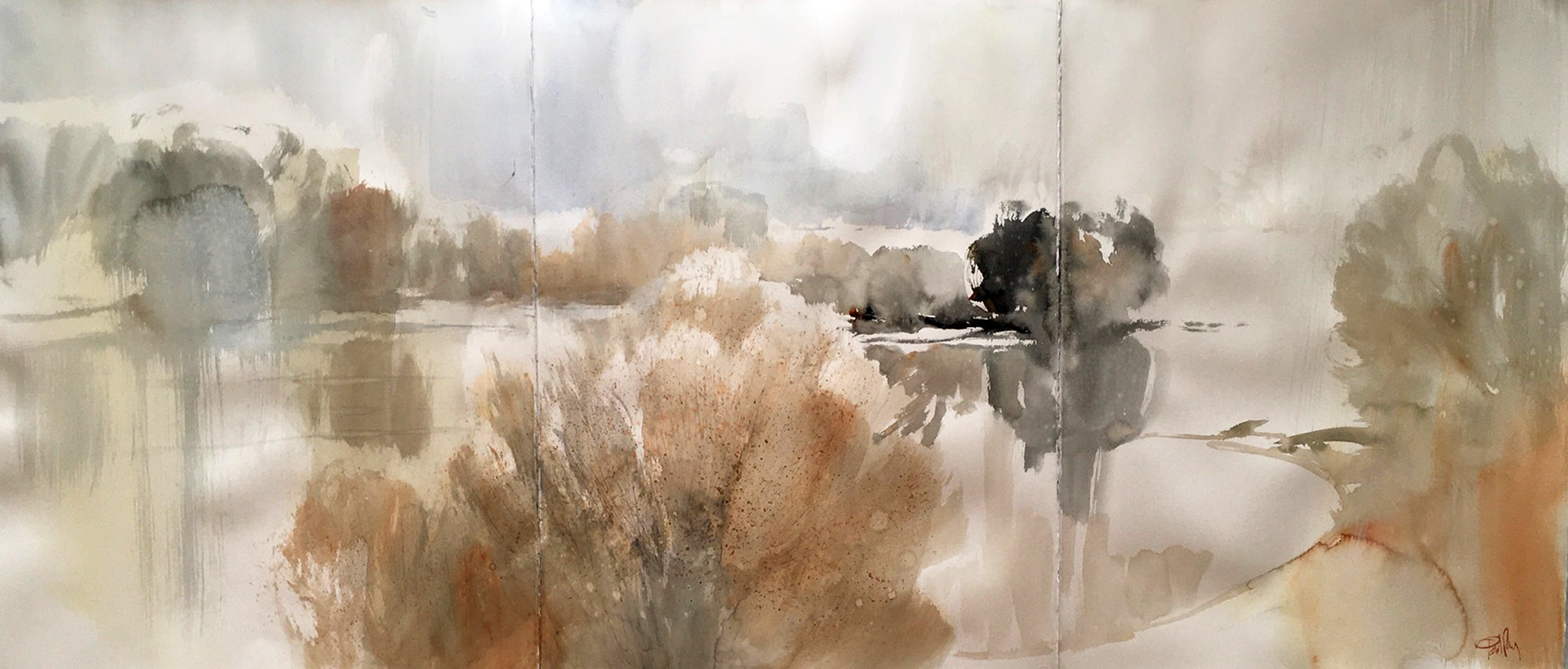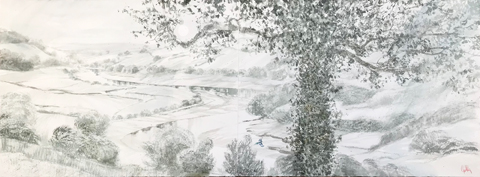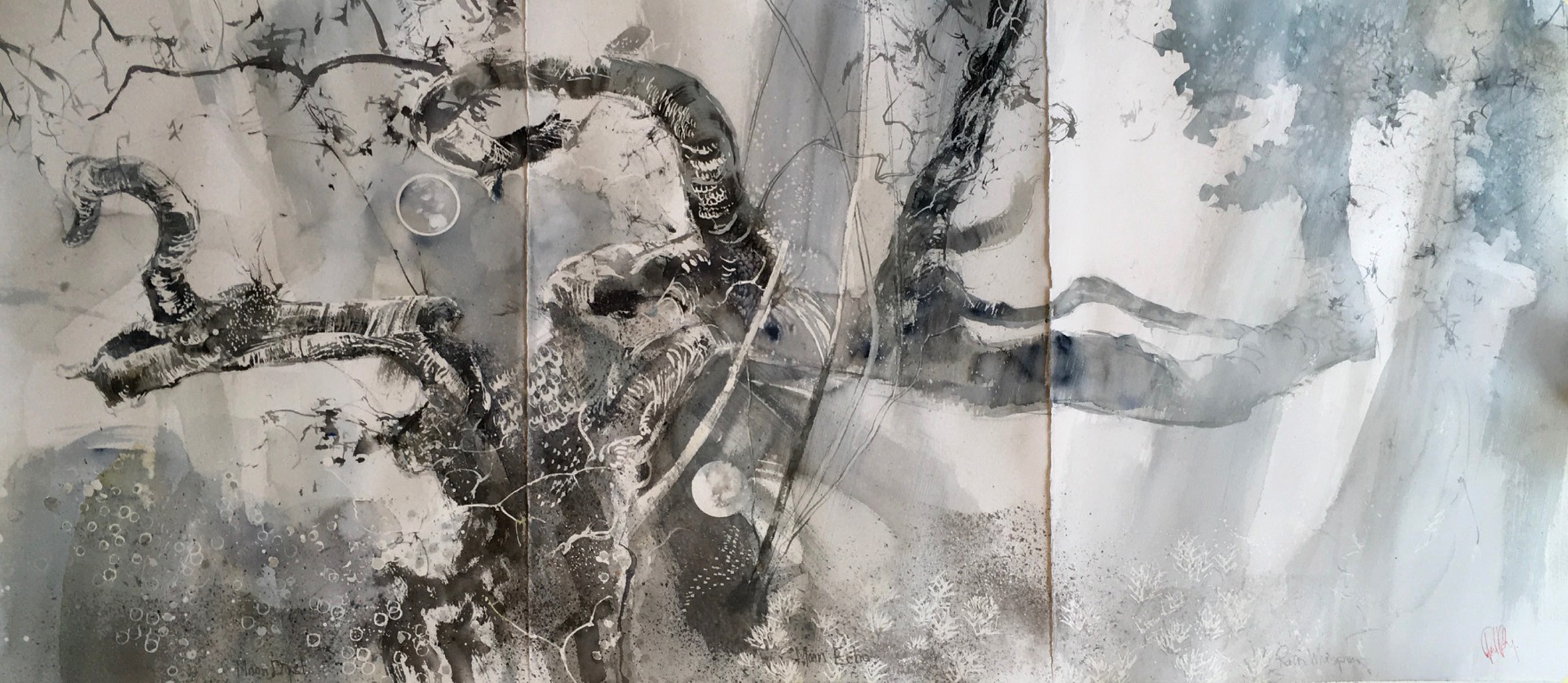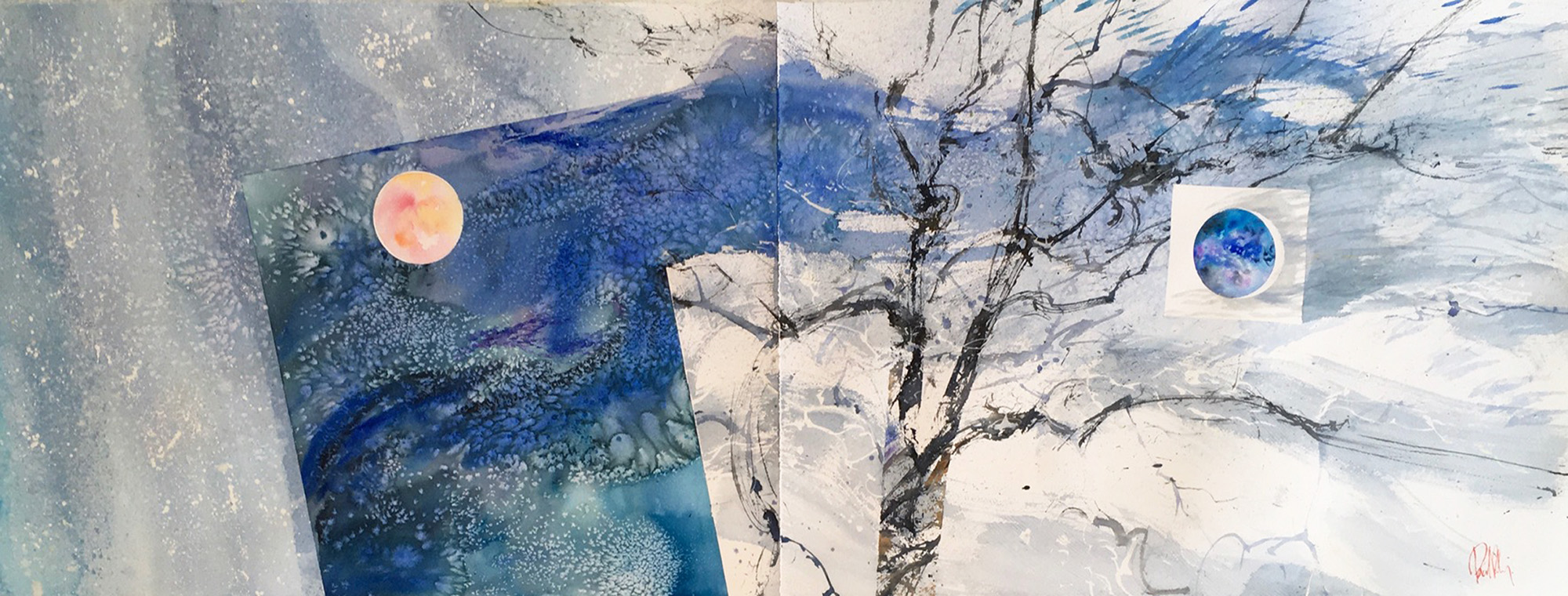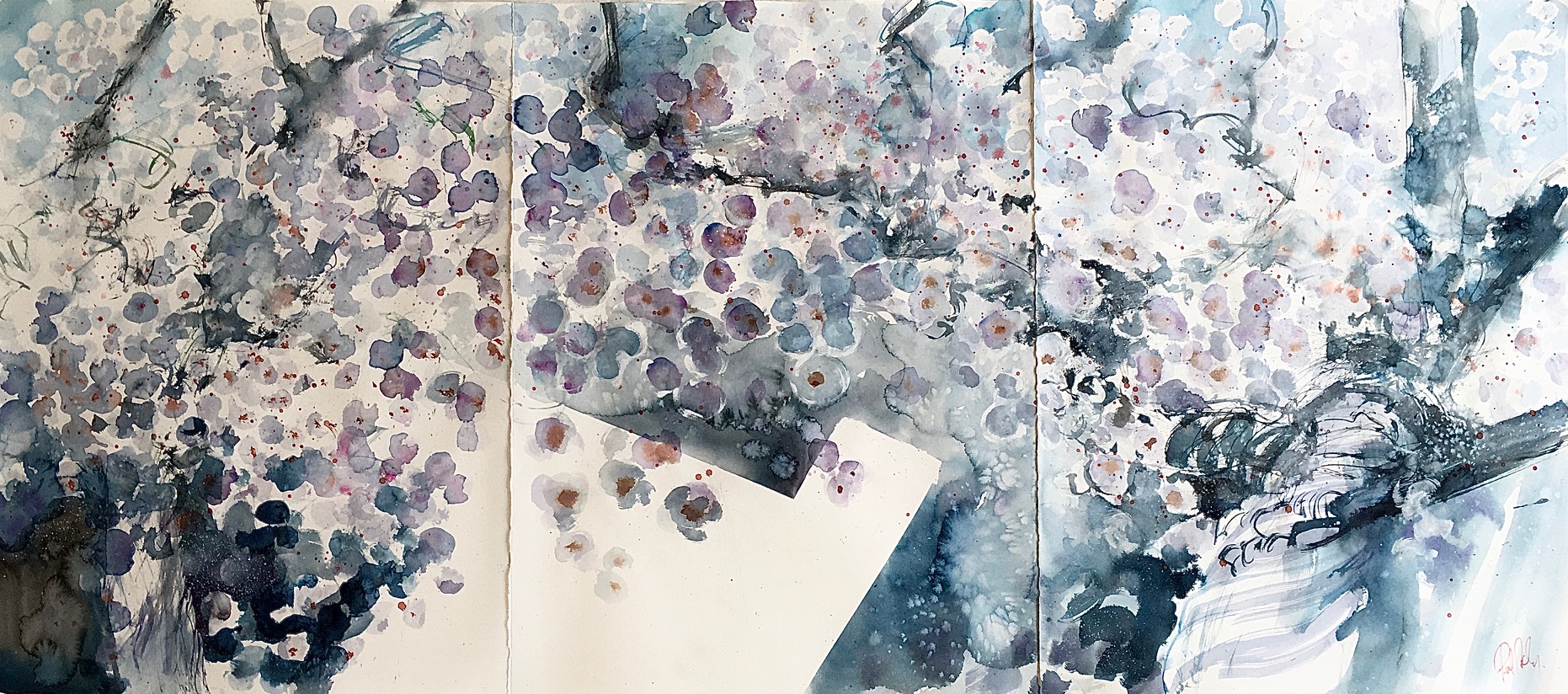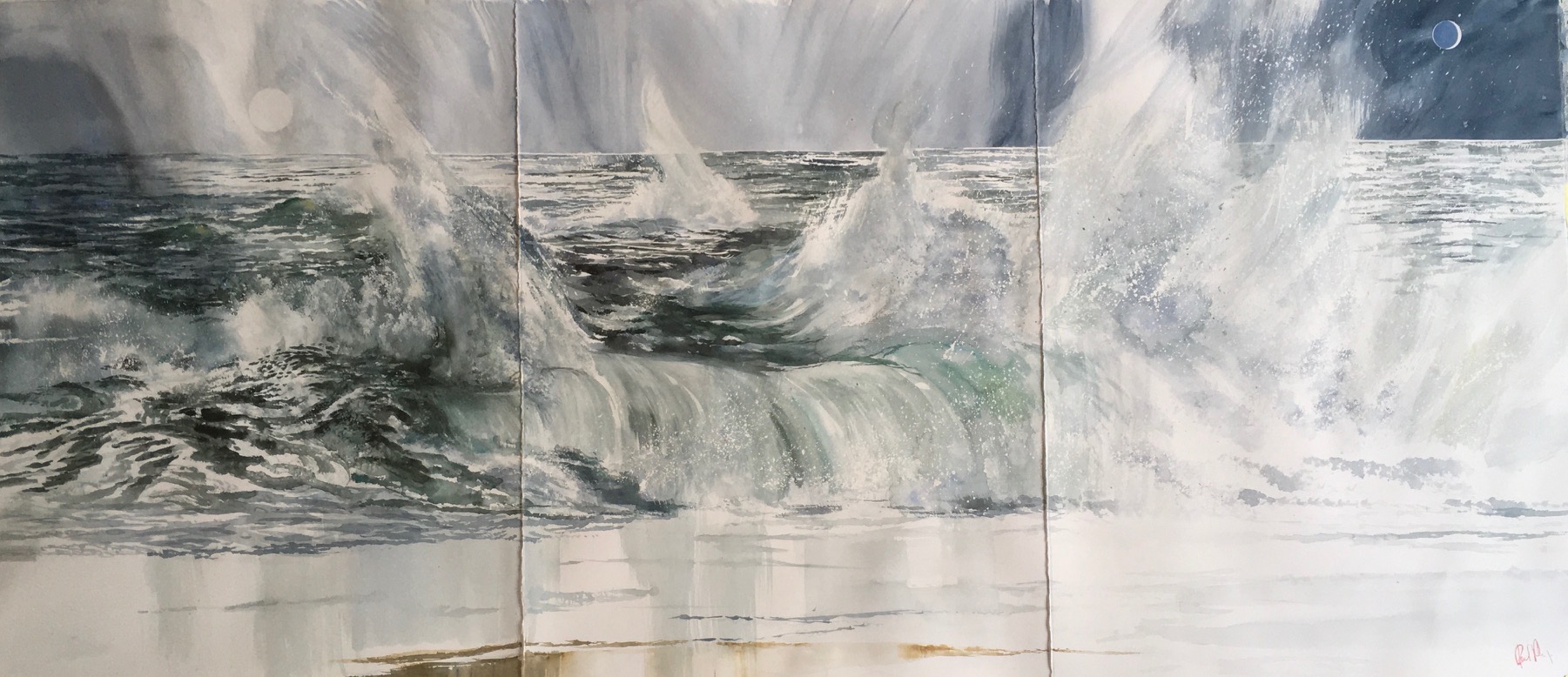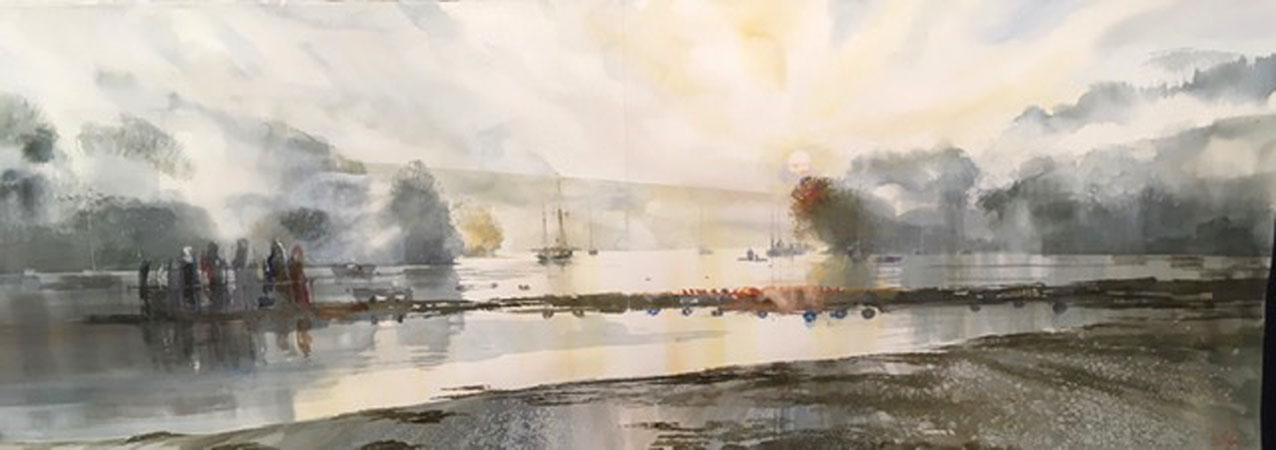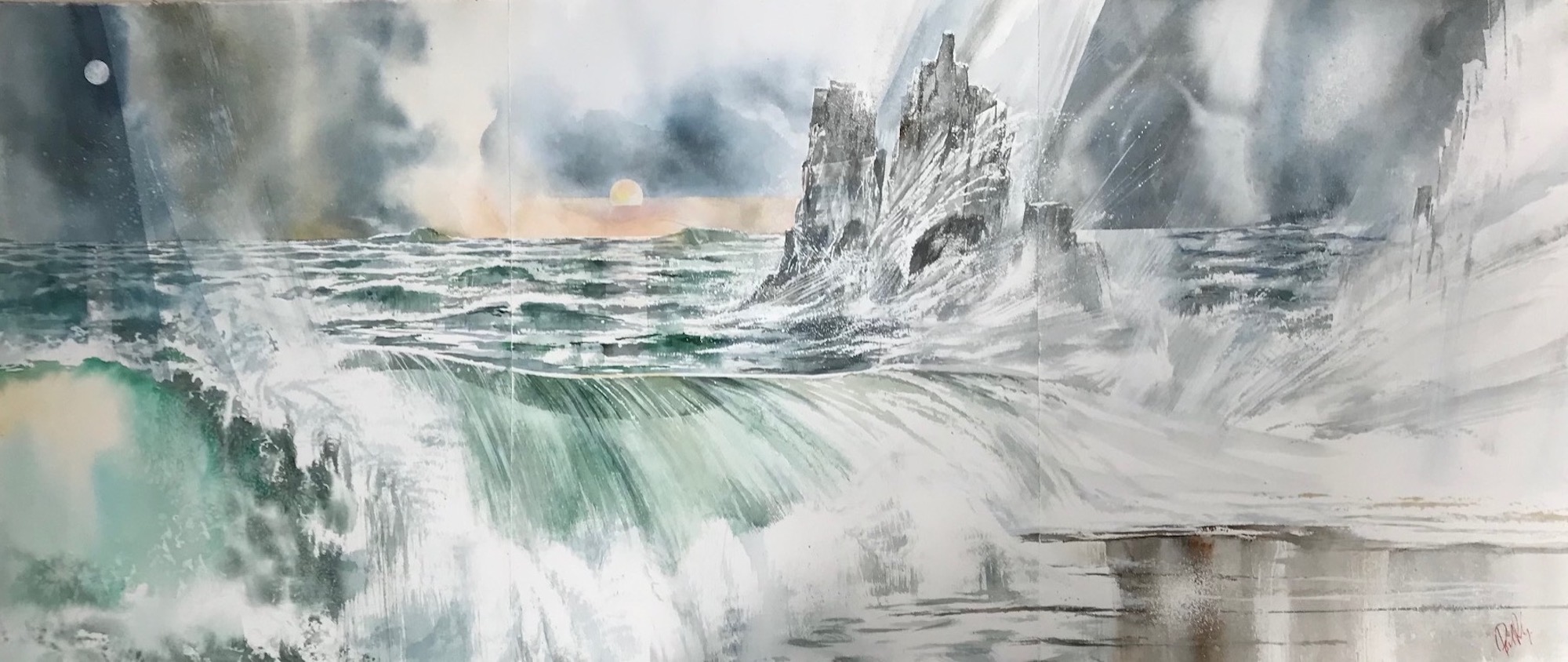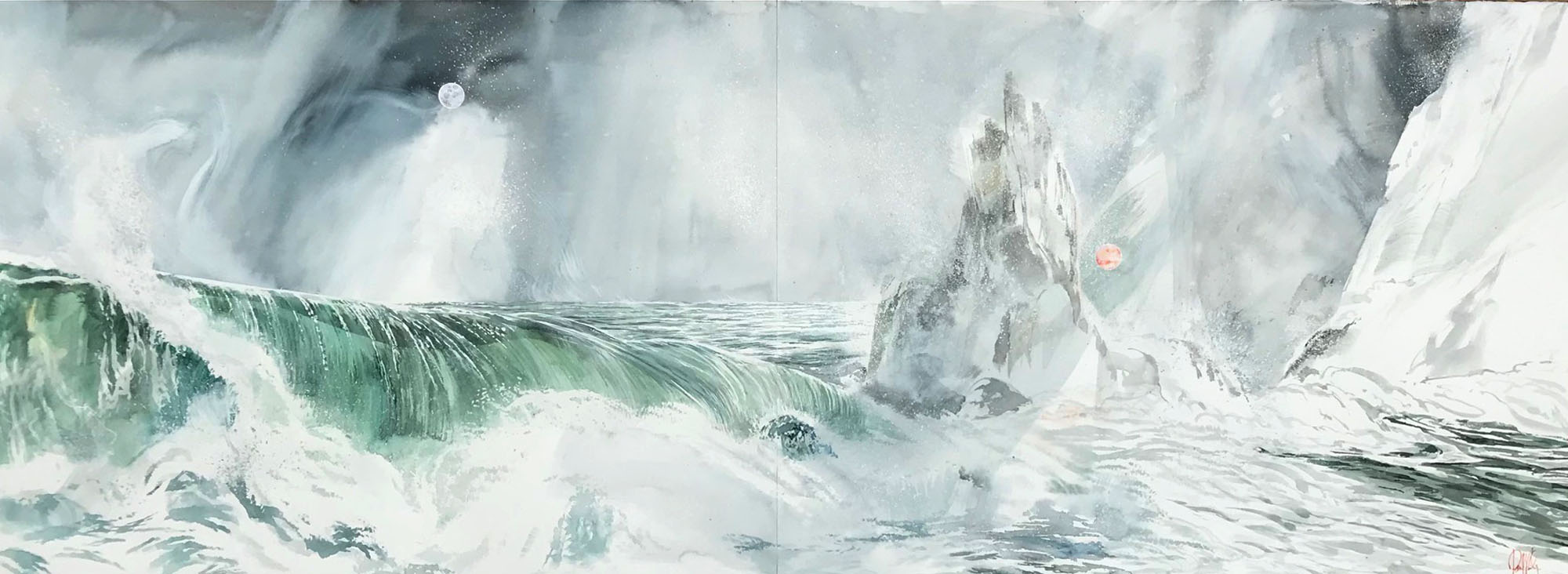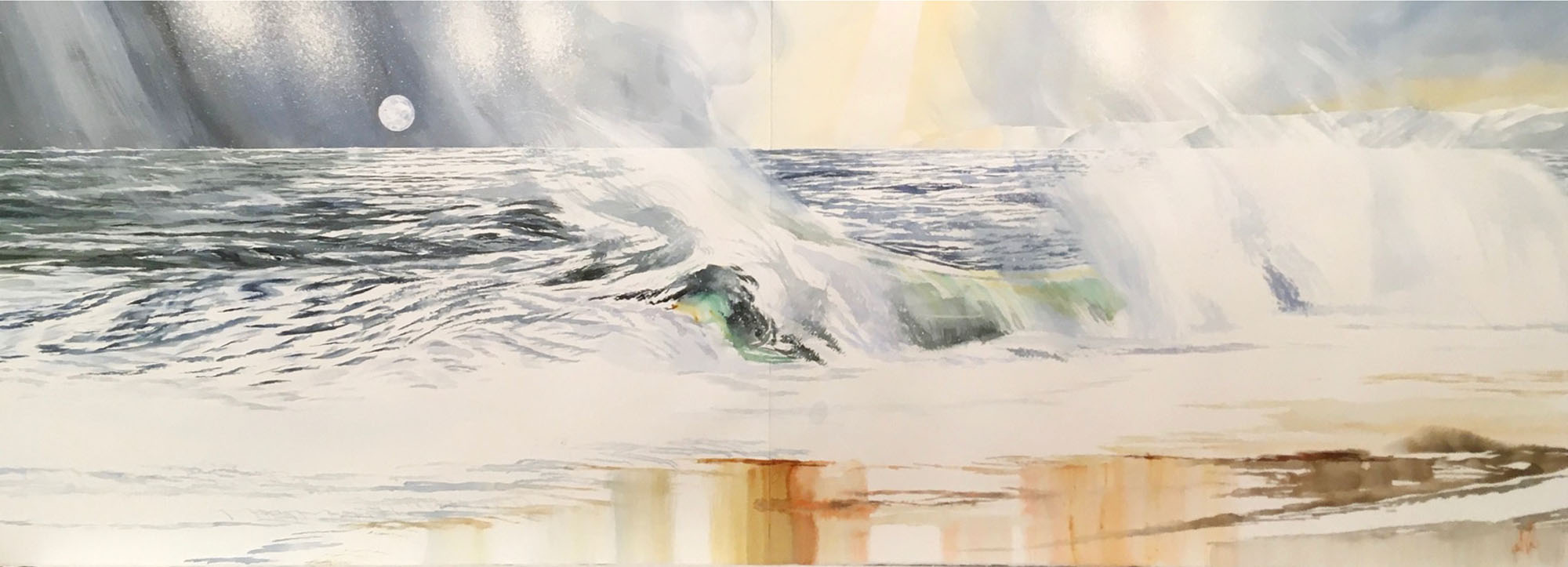Polyptychs
Poly – many; Ptych – folds
I have been exploring multi panelled images for some time; the reason being to help in the transportation of large pictures. This was one of the reasons why polyptychs were invented. They were largely used in religious paintings during, and after the Renaissance. In fact, the invention proved really popular as it enabled precious works of art to be quickly moved in the event of troubles such as the sacking and pillaging of the places of worship that housed them. Having an image painted on more than one panel enabled the artist to explore more than one aspect of that image. A classic example is the Ghent altarpiece by Hubert and Jan Van Eyck which has no less than 12 panels. These illustrate the Crucifixion with attendant persons plus a series of narrative scenes.
Personal Use
I needed to be able to produce large watercolours that could be folded for ease of transport and exhibition. The standard large sheet of watercolour paper is 56 cms x 76 cms so I am able to produce multiples joined either on the long edge or short edge as triptych or diptych ( three or two panel) versions. It is entirely possible to have more panels i e quadriptych -4, pentaptych -5, hexaptych – 6 etc but I haven’t gone down that road yet. Maybe soon; the prospect is exciting.
Possibilities
I have been using the polyptych format for exploring ways of depicting time. For example, the same scene seen at different times of the year, or the same view at different times of the day. The way the sun and the moon co exist in their relationship with the earth can also be broken into separate illustrations. The one thing I have discovered when working with a very wide image is that it occupies my field of vision so that I can feel encompassed in the same way as being surrounded by nature.

